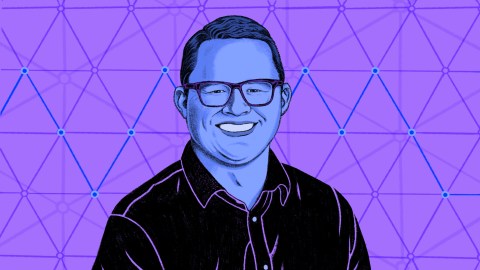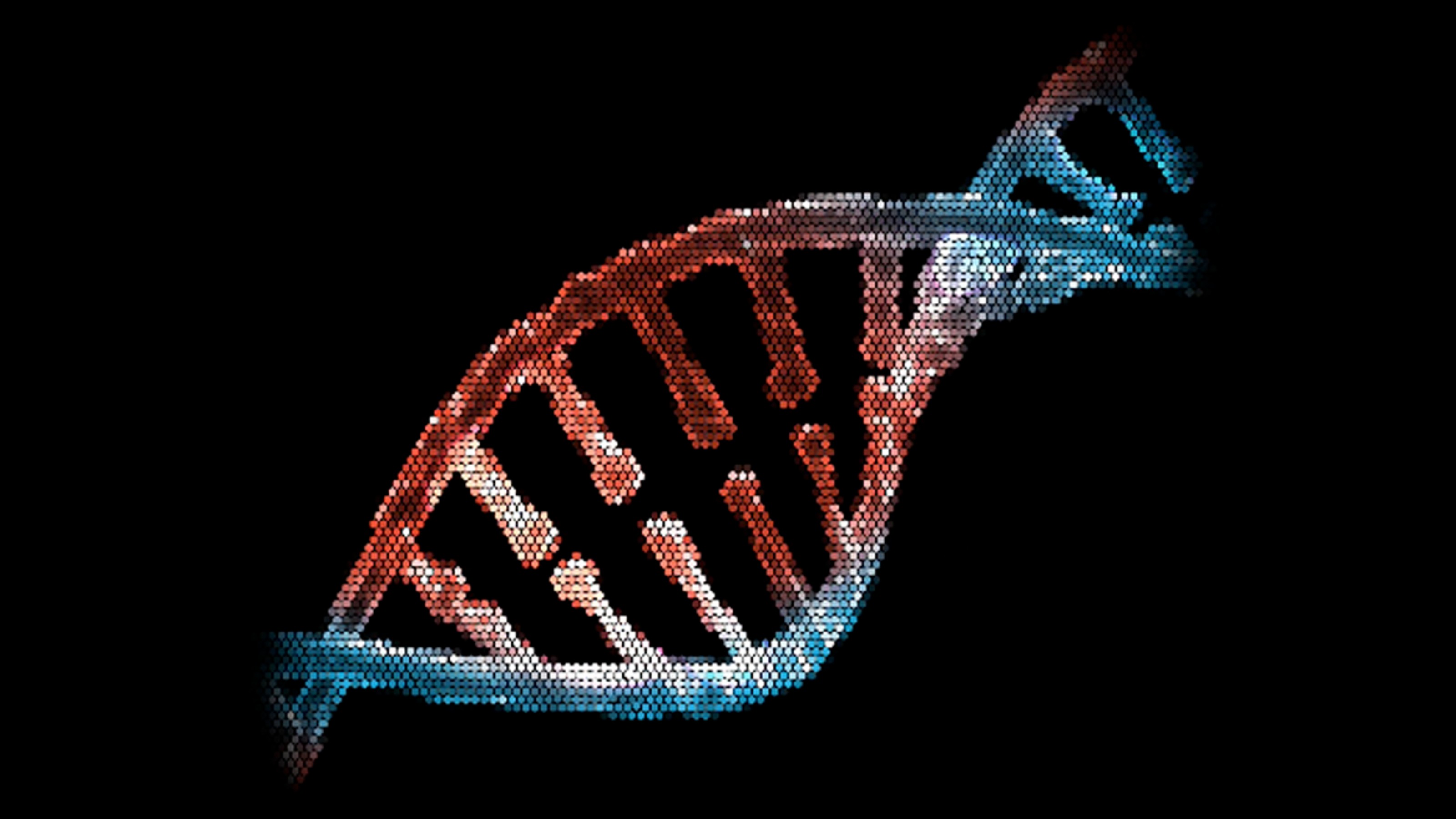GitHub COO Kyle Daigle on the “secret of good AI”

- In science fiction and real life, encountering advanced technology often leads to a period of confusion. This is true of AI today.
- The surge in AI has transformed industries, but there is still a need to calibrate and determine the best usage policies.
- AI should be seen as a tool to complement human tasks, reducing toil and enhancing productivity.
There is a common plot device used in science fiction where a primitive life form will encounter some strange or more advanced technology. Initially, the creature simply stares at the device. Like a monkey with an iPhone, they bash and abuse the technology. Over time, either the protagonists or we, the audience, will work out the proper usage. For instance, the entire plot of Arthur C. Clarke’s Rendezvous with Rama features human explorers who board the alien spacecraft Rama to find themselves faced with technologies they cannot comprehend.
The same is true, too, in real life. There have been many moments in history when humans have discovered or invented a thing, only for it to take a great deal longer to work out how to best use it. Once the steam engine gained popularity in the 18th century, it took nearly a century to figure out how to transform this energy into useful consumer and industrial products. When Heinrich Hertz discovered radio waves in the late 19th century, he speculated they might not have any practical value whatsoever. It took another few decades before Guglielmo Marconi invented the radio. The internet languished as military technology for twenty years until commercial and civilian use became obvious.

So, too, with artificial intelligence. Even the most cursory observer will sense that we’re on the cusp of something momentous. The surge in AI has already transformed industries and societies in ways we couldn’t imagine ten years ago. But we are still in a calibration period. We’re still working out the best usage policy.
Earlier this year Big Think talked to the COO of developer platform GitHub, Kyle Daigle, about how he sees AI being used, and he put it like this: “Right now, we’re just trying to jam AI everywhere. It’s like saying, ‘Well, we could use this for mashed potatoes!’ But no, this thing is a butter churn. It’s not meant to do that. And we’re at that moment in the industrial revolution of software where we’re trying to figure out where we apply it.”
The distraction of a gimmick
Imagine you are a science fiction savage and you come across a pen-shaped, sleek metal object. You know it’s futuristic. You know it’s powerful. What do you do? Well, you monkey-bash it. You press along its side, you tap it on the table, you waft it like a wand, and so on. You desperately try everything you can to turn on or activate the object. But this wastes time and adds nothing in the long run. According to Daigle, this is exactly the problem facing AI right now.
“Most employers or companies, when they’re adding AI to their product or bringing AI tools to their businesses, they’re looking for those sparkle moments, those shiny moments, and they’re usually just veneers,” he says. “They’re not actually improving the lives of anyone. And that’s the secret of good AI; it’s not that. I can chat with this tool and get the same answers back — but it should make me feel more productive and happier and get the result I’m looking for faster.”
Daigle’s point resonates. If you have spent any long period of time on AI, you will realize not only how much of a time sink it is but also that it can often make tasks longer. At times, LLMs can be a glorified Google search, but they are more expensive and take longer to produce. At other times, if their output requires serious fact-checking or re-editing, you might as well have solved the issue yourself. It’s similar to the early days of voice-to-text software — the gimmick distracted from reality. Even today, it’s often longer to reread and copy-edit Siri or Google Assistant than it is to type the message.
Integrated AI
In the mad rush to provide the killer AI application, GitHub has chosen to adopt a different approach. They see AI not as a replacement for human labor, nor is it an entirely new industry altogether. Rather, AI is a way to supplement and complement existing human tasks. As Daigle put it, “At GitHub, for our product [the code completion tool Copilot], we’re really looking at places where there’s no new behavior necessary. We’re not teaching you how to engage with the AI; we’re saying it’s something you’ve dealt with for years. But now let’s just let the AI fix it with a click of this button, as opposed to having to go build the fix. The AI is completely in the flow.”
“Right now, we’re just trying to jam AI everywhere … and we’re at that moment in the industrial revolution of software where we’re trying to figure out where we apply it.”
Kyle Daigle, COO of GitHub
The fundamental and philosophical point underpinning Daigle’s view is that humans do not radically change their behaviors overnight. In fact, if you look at the history of human progress, you can see humans doing the same things, but with different tools and with different degrees of efficiency. AI will not turn us into lounge-lizards reclining on spaceships in utopian immobility. It will not make human behaviors, or even work, entirely obsolete — at least overnight. That’s not how progress works. As Daigle puts it, “Every time you say to a customer or any human, ‘Well, everything will be better if you just change everything about the way you do it,’ then it won’t happen. Behavior change doesn’t work that way. It has to be small, incremental, and valuable.
A good fit for humans
No one is ruling out the possibility that AI will radically transform the world. In fact, it’s likely that it will. But not in the short-to-medium term. The AI tools we have at the moment are just that: tools.
“I think the first thing is that you have to start where your employees are experiencing toil in their day-to-day job,” says Daigle. “You can’t really come in and be like, ‘Oh, writing docs is long and hard. So, here’s a tool that’s going to help you write docs.’ If that’s a core part of your job, you might enjoy the benefit, but that’s not toil work — that’s the job. The benefits of bringing AI to normal employees are where we’re reducing toil.”
AI might be the most impressive technology humans have ever invented, but it still has to fit into a human hand.
One example, he continues, is “how no one wants to say, ‘Hey, my computer doesn’t work. Let me go submit a ticket and then wait a day.’ That’s just toil work for everyone involved. And at GitHub, what we did was find a vendor that can help answer these questions and take actions on behalf of employees in a chat room. So you go to the IT help desk; you don’t create a new ticket, and you don’t do anything new. You just type, ‘Hey, my computer is really old.’ And the AI says, ‘Oh well, it looks like you’re eligible for a refresh. Here, click this button, and we’ll send you a new laptop.’ No one had to do anything. That’s a real reduction in toil.”
Daigle’s point is that we have to make AI practical and meaningful. Artificial intelligence could be a hammer for a nail, a microscope to see better, or a pen to write better. We don’t entirely know what it’s best at yet, but the fact is that it has to complement existing behaviors. AI might be the most impressive technology humans have ever invented, but it still has to fit into a human hand.





